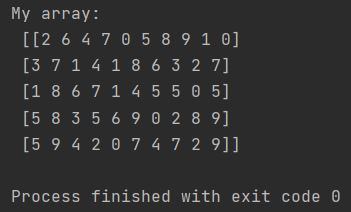Numpy is a Python library that provides a comprehensive mathematical library. It includes functions for generating random numbers, among other things.
Let’s learn how to generate random integers in range with Numpy. We will use Numpy randint method for that purpose.

Np random randint
The most common way to generate random integers in range with Numpy is to use the randint() method. The syntax for the randint() method is as follows:
import numpy as np np.random.randint(start, stop, size)
The start parameter specifies the starting value of the range. The stop parameter specifies the ending value of the range. The size parameter specifies the number of random integers to generate.
For example, the following code will generate 5 random integers between 0 and 10:
import numpy as np random_integers = np.random.randint(0, 10, 5) print(random_integers)
The output shows that the 5 random integers generated are 2, 7, 9, 3, and 4.
To generate random integers just use randint and reshape Numpy methods. The randint syntax is as in below example.
import numpy as np
my_array = np.random.randint(0, 10, 50).reshape(5, -1)
print(f"My array: \n {my_array}")
np.random.randint(0, 10, 50) generates random integers between 0 and 10. There are 50 of them.
Other Ways to Generate Random Integers in Range with Numpy
In addition to the randint() method, there are a few other ways to generate random integers in range with Numpy.
- The random.choice() method can be used to choose a random element from an array.
- The random.sample() method can be used to randomly sample a number of elements from an array.
- The random.shuffle() method can be used to shuffle the elements of an array.
For more information on these methods, please refer to the Numpy documentation.
Conclusion
We have learned how to generate random integers in range with Numpy. We have also learned about some other ways to generate random integers with Numpy.
Tips for Generating Random Integers in Range with Numpy
- Use the random.seed() method to set the seed for the random number generator. This will ensure that the same sequence of random numbers is generated each time you run your code.
- Use the random.shuffle() method to shuffle the elements of an array before generating random integers from it. This will help to ensure that the random integers are evenly distributed throughout the range.
- Use the random.choice() method to choose a random element from an array. This can be useful if you only need to generate one random integer.
- Use the random.sample() method to randomly sample a number of elements from an array. This can be useful if you need to generate a specific number of random integers.
